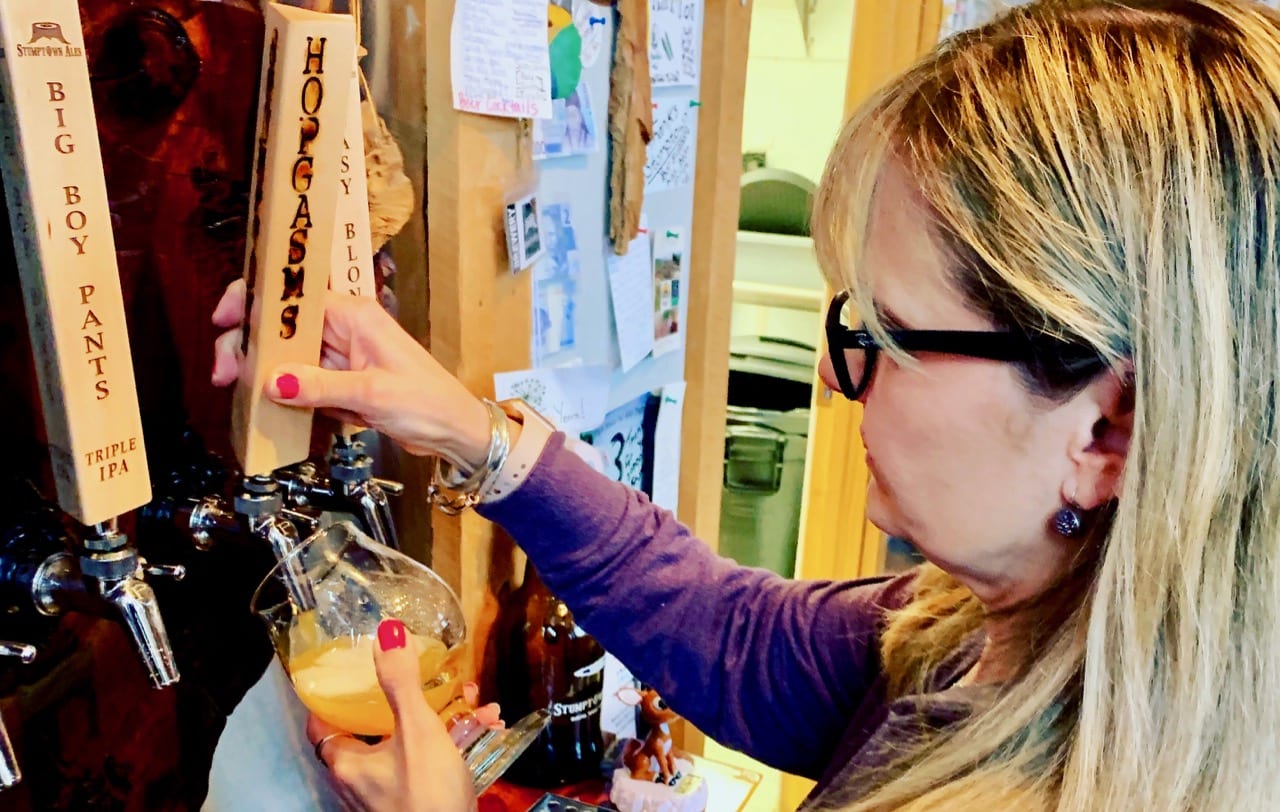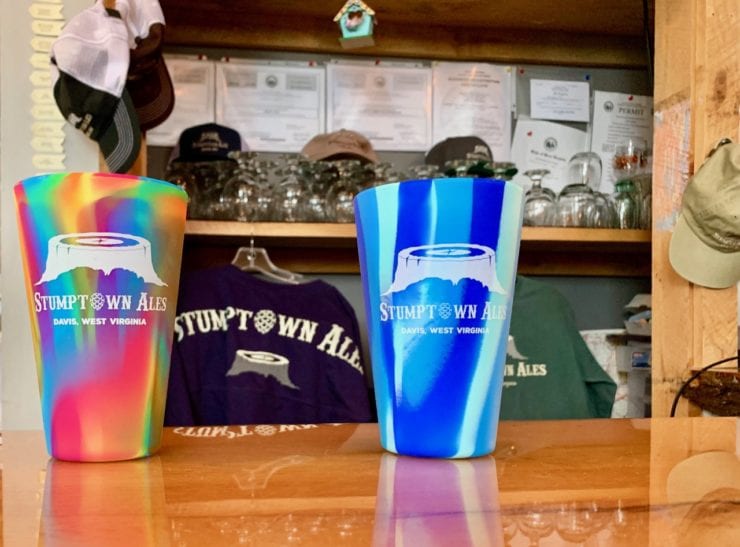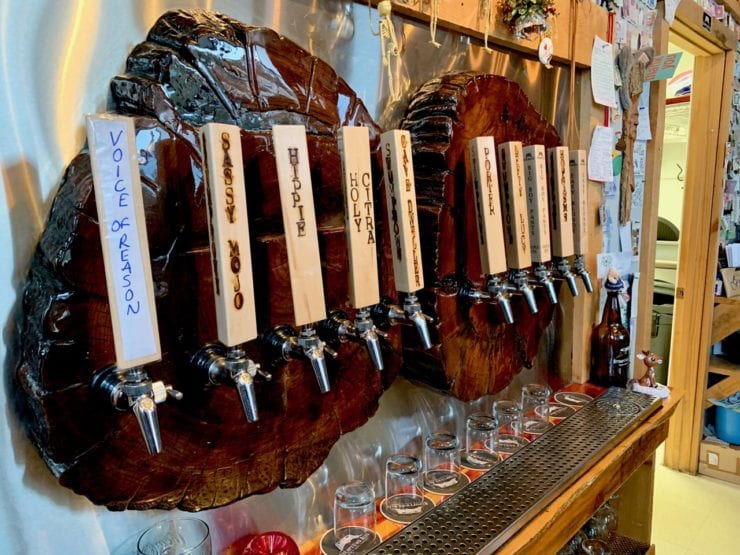
Stumptown Ales settles down
April 3, 2019
The past year was a little unsettled and a bit unsure for the owners of Stumptown Ales as they debated their future plans. Should they move to a larger space; should they build a whole new brewery; should they just relax and stay where they are? These were the questions pored over as they poured their popular IPAs at the Davis, WV brewery taproom.

Well, the decision was made and it is now final: They are staying put at 390 William Avenue in Davis — at least for the time being. Jonathan and Cindy Robeson became the new owners of their existing brewery building on March 28.
Five years ago when they first began leasing the building, they really didn’t know what to expect from their new brewery venture. “We just needed a place to get our feet wet and see if our dreams were possible,” Jon said. As you know, things went well for them, and they learned a lot about how to make a good business out of local beer. Given all the options, buying their building was the right one for them. With this decision behind them, Jon says they will continuing working on maximizing sales at the brewery and taproom they have, rather than venturing off right now on a new bigger production facility.
Maximizing Stumptown efficiency
“We’re still only brewing six or seven times a month,” Jon says as he discusses their ability to grow at the current location with their current equipment. He wants to see brew days increase to 9 or 10 times a month, which could potentially increase production 30 to 50 percent.
With a yield between 8 and 9 barrels each brew session, Jon says every extra batch they do produces another 50 one-sixth-barrel kegs that he has to sell. Brewing two more time a month would amount to an another 25 kegs a week which would have to be absorbed by the market.
In order to squeeze more efficiency and revenue out of their existing space, they are attacking on all fronts. The past year and the upcoming months are seeing lots of incremental improvements that are working:
- increasing hours and days the taproom is open
- increasing beer production by brewing more often and adding more kegs
- producing more small batch experimental beers on the little 2-barrel pilot system for taproom sales
- packaging more 16 oz. cans, now produced once a week and sold at the brewery
- adding more taps to the brewpub (now 10, soon 12)
- promoting more merchandise sales by adding greater variety to branded items
- increasing runs on their self-distribution routes
- adding simple pizzas to the taproom food menu
- operating an AirBnB in the second floor apartment above brewery.

As evidence of their improvements, even though the Canaan Valley area experienced a worse than average ski season, Stumptown’s taproom business was up. “Business during the winter was great.” says Jon.
Expansion ideas still brewing
Stumptown buying its building does not mean that expansion plans are off the table, but it does mean they will take their time figuring it out. Instead of jumping to build a larger production brewing facility, Jon wants to explore other options such as building additional Stumptown retail outlets or adding a second small brewery taproom at another location.
“If I had the capability to open another Stumptown pub somewhere, that’s what I would want to do as opposed to brewing an extra three batches a month and distributing it,” he said, then he added a hint as to a possible direction for a new facility. “I’d almost rather open another brewery and call it Funktown or something.”

He says, while their current distribution routes do help cover brewery overhead, there is a point where it becomes better to have another place to retail the beer yourself rather than selling it wholesale. While this may not please all the local beer fans who want to see more Stumptown Ale delivered to their local markets, it could possibly be the best decision for Stumptown from a business sustainability perspective.
Stumptown is committed to its current distribution routes which include: Tucker County, Morgantown, Charleston, Huntington, Greenbrier County/Snowshoe, Eastern Panhandle. A Northern Panhandle route is under consideration as brewing days increase. Due to the brewery’s small production and the current popularity of their brands, only a relative handful of retail/bar accounts will be able to be serviced in each area. They do not see that changing much.
Brewery taproom model popularity growing

Like many newer breweries across the nation today, Stumptown Ales is seeing the business model that really works for them is the brewery taproom model. Instead of relying primarily on distribution or food sales for its base revenue, the brewery taproom concept focuses on maximizing beer sales through its taproom. It may distribute some, but relies on its taproom for the bulk of its revenue. On the other hand, the distribution brewery model may have a taproom, but relies on distribution for the bulk of its sales. Then, there is the brewpub model which is also a full service restaurant that relies on food sales to make up a large share of its revenue. The brewery taproom model has much more limited food offerings than does the brewpub, often relying on food trucks and caterers to augment its very limited in-house food service.
The brewery taproom model works because it sells the bulk of the beer at full retail pricing, which is easily several times more profitable than beer sold into distribution. It is also more profitable, less risky, and infinitely simpler than running a full service restaurant. For brewery owners that don’t mind staying small, they find that they can make a nice living off of selling to their regular customers at one location, without all the headaches and lower margins of distributing and food service.
People like it because you can stay small enough to know most of your customers and still make a decent living out of it. While you probably won’t get rich, the model is conducive to a more laid back lifestyle, without the pressure to rapidly grow, the worry of paying off huge bank loans, or concerns about how others may be mishandling your beer.
It’s still true in America today: Make great beer and the world will beat a path to your door.


